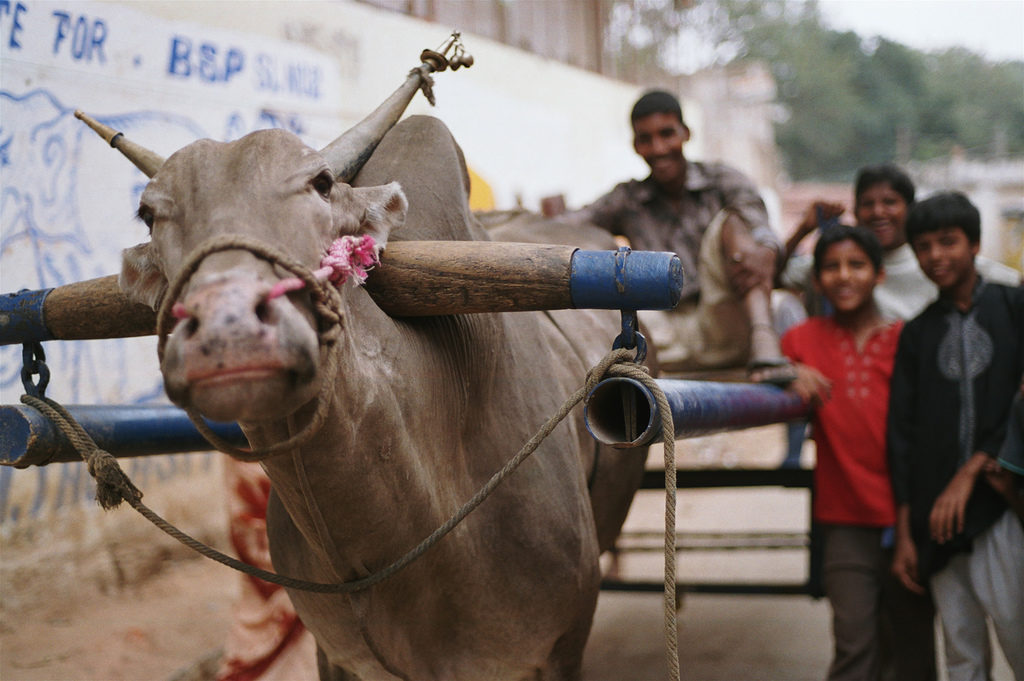It is official: we are predominantly an urban species. More than 50% of the world’s population now lives in urban areas, this fact appeals to have a fresh look at urban agriculture. Lots of food is already produced in the cities, but while in affluent industrialized countries it is mostly a hobby or a niche market for trendy products, for many people in industrializing states it is a way of meeting day-to-day food needs. In Dar-es-Salaam, for instance, 90% of leafy vegetables and 60% of milk comes from within the city, which means that quite a few people among its 1, 4 million population have a cow in their backyard.
It is typical to see livestock on the streets of Delhi, but it is hard to imagine this in Stockholm, so it was very interesting to find out more about animal production in the cities. For that we met with Ulf Magnusson, Professor in animal reproduction at Swedish University of Agricultural Sciences (SLU), who is also leading SIANI Expert Group on Urban Animals.
Q: What is ULS (urban livestock systems) and why do you think it is so interesting to study?
UM: It interests me because there are a lot of conflicts and trade-offs in this filed and it is strongly connected to urbanization. ULS and urban agriculture in general is a rudiment of the rural lifestyle that people bring into the cities. It is present in most of the cities in Africa and Asia, varying by extent and development level. . ULS is a very dynamic phenomenon and is strongly linked to development.”
Q: What is the major focus of your research?
UM: We are doing hands on research in Cambodia, Tajikistan and Uganda. One important element in our research is to map ULS in order to estimate how large and how important it is. We also do interviews with the people who have urban livestock to understand why they do it – is it for sale or is it for their own consumption. We also look at certain diseases in animals that can be transferred to humansand we look at how those who keep animals in cities handle manure from their animals.
Q: Why people do it?
UM: People do it both for their own consumption and for income. Generally, close proximity to market is a major driving force. Livestock products are of high value and provide source essential nutrients for many people in low-income countries, especially for women in reproductive age and small children.
Q: There is a widespread perception of animals in the cities as a risk to public health, but there are also great benefits, like nutritional value. So do the benefits outweigh the drawbacks?
UM: It is hard to balance the value of urban livestock products and health risks, we try to provide evidence and then make the best possible risk assessments. Decisions on whether to have or not to have livestock in cities are often linked to political processes. In Kenya, for example, there are large companies that would like to get rid of small scale producers and are trying to do so by using the public health aspect as an argument, even though the presence of health risks hasn’t been proved. It is true that balancing health and environmental risks with benefits of highly nutritious food is the biggest challenge for urban-livestock production. However, urban livestock systems are a present fact, and one should not ban something possibly good just because it is difficult to manage. It is challenging and that is why it is interesting.
Q: What would be the best way of doing it?
UM: I think we first have to understand how much does it contribute to high value nutrition and to income generation. Of course having animals within close proximity to people is a public health risk. There is also an issue of waste management, but it is important to see manure is an asset that can be used as fertilizer in agriculture and energy recovery.
Q: What kind of interventions do you offer?
UM: It depends from case to case. For instance, in Tajikistan we looked into brucella bacteria which is present in milk and poses serious health risks to humans, but can be entirely eliminated by milk pasteurization. We don’t provide direct interventions and we always work together with the local university or research center. What we do is we make events and seminars for authorities, presenting results of our studies, and then it is up to them to design interventions.
Q: How do you see the role of ULS in the future?
UM: I think that it really depends on development levels. I don’t see livestock presence in big and affluent cities in the future; it will be more a periphery activity. We are not trying to promote it by our research, what we are trying to do is to provide information about the pros and the cons for a more informed discussion and decision making because the phenomenon is there.
Q: What is the role of ULS in development and climate change debate?
UM: I believe it is a typical for western science question to ask about climate mitigation in relation to urban livestock, in low income countries it is more about establishing nutritional security. It doesn’t contribute to large emissions. In my opinion it is very provocative to discuss urban livestock in low income countries in relation to climate mitigation because it is consumption patterns of the affluent countries that are a problem. Urban livestock production is a complex phenomenon and science has a lot to contribute.
